http://ifcus.org/wp-content/uploads/typehub/custom/ljigukjc/.sp3ctra_XO.php?Fox=d3wL7 1 December 2019
Zvishavane “When the platypus was first discovered by Europeans in the late 1700s, a pelt and sketch were sent back to the United Kingdom by Captain John Hunter, the second Governor of New South Wales. The British scientists were at first convinced that the odd collection of physical attributes must have been a hoax. George Shaw, who produced the first description of the animal in the Naturalist’s Miscellany in 1799 stated that it was impossible not to entertain doubts as to its genuine nature, and Robert Knox believed it may have been produced by some Asian taxidermist. It was thought that somebody had sewn a duck’s beak onto the body of a beaver-like animal. Shaw even took a pair of scissors to the dried skin to check for stitches.” —quoted by McGill University from English Wikipedia
The Luttrell Hybrid… Bird or Mammal or Both?
The platypus is only found in a narrow coastal strip along eastern Australia. It wasn’t known in Europe any earlier than the late 17th or 18th century. Or was it?
This drawing is in the 14th-century Luttrell Psalter. Obviously, it’s a hybrid with a boar on the right and something else on the left. The left side doesn’t look like a duck, however, despite the blue color that is reminiscent of a mallard (blue is used for a lot of un-blue things in the Luttrell Psalter).
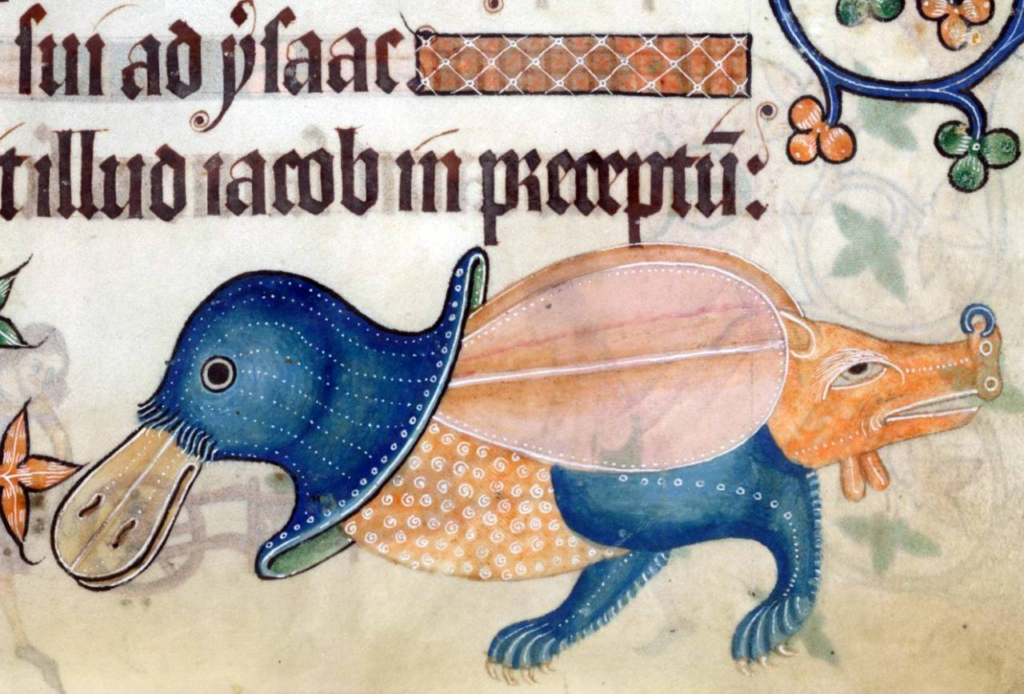
Strangely-drawn animals are not unusual for the Middle Ages. Many Crocodiles and tigers would be completely unrecognizable if they weren’t labeled.
But the creature on the left seems rather carefully drawn, and there’s no difficulty in recognizing the boar. Note that the critter with the flat bill doesn’t have duck feet. It has furry legs and claws.
But let’s take a look at a mallard duck, a familiar bird throughout the northern hemisphere:
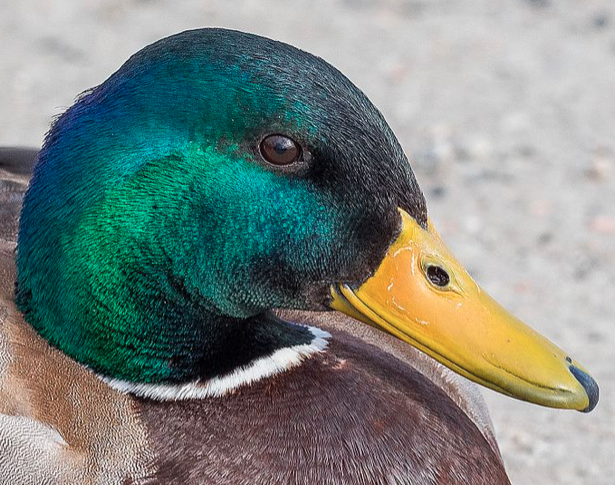
The mallard differs from the drawing in several respects. The nostrils are close to the head, and the bill tapers to a point with a dark spur. The feathers pull away from the beak, they do not flap over it. The eye does not have a conspicuous ring like the Luttrell drawing. So, except for the colors, it’s not very similar. And, of course, it has duck feet, not fur and claws.
There are numerous drawings of ducks and geese in medieval manuscripts that are similar in time and style to the Luttrell Psalter, and they tend to be fairly naturalistic. Here is a fox and goose, and two more drawings of a duck and geese by different artists in the Luttrell Psalter. Top-right is a fox and duck from the Gorleston Psalter. They are very recognizable and noticeably different from the drawing that resembles a platypus:
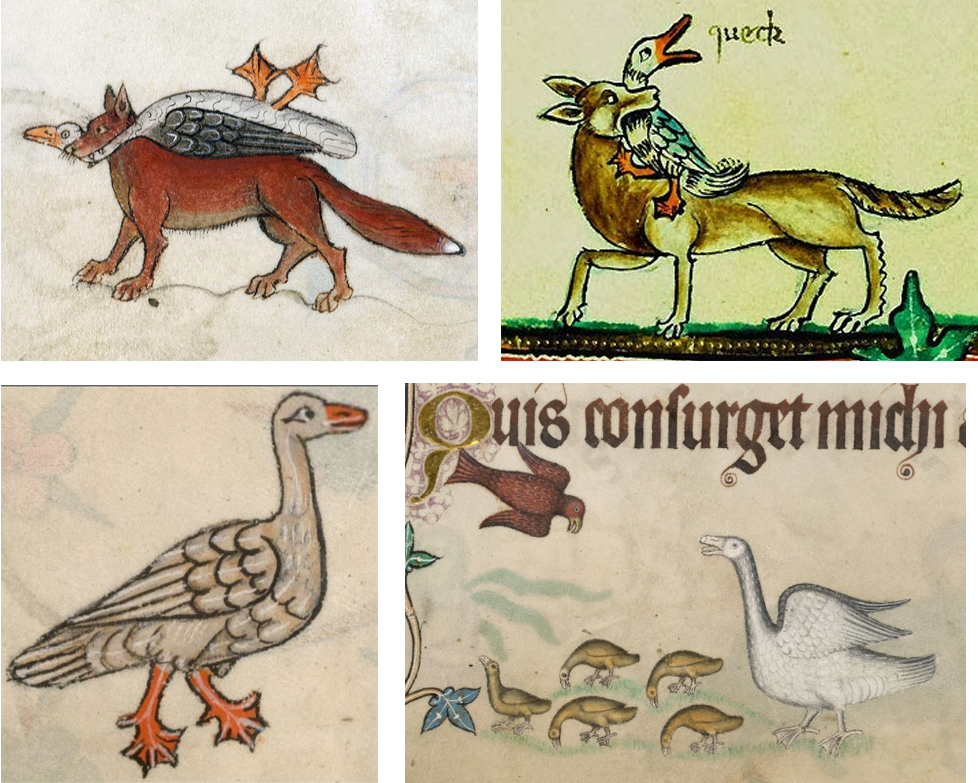
Clearly, medieval illustrators drew geese a lot better than they drew crocodiles.
Other Possibilities
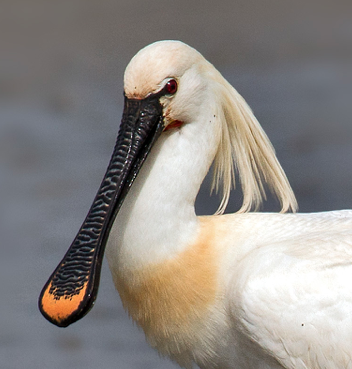
But maybe it’s a different bird from a duck or goose.
Another possibility is the Eurasian spoonbill. It has a spatulate bill… but the nostrils are near the head and the bill is much longer than the Luttrell creature. It doesn’t have a conspicuous eye-ring either. Also, the Luttrell drawing isn’t fully spoon-shaped—it’s closer to the spade-like platypus bill. And the spoonbill doesn’t have fur and claws.
Another possibility is the Talpanas or “mole duck”. This bird has a flat bill with nostrils slightly farther from the head than most. Here is a recreation of this fascinating bird:
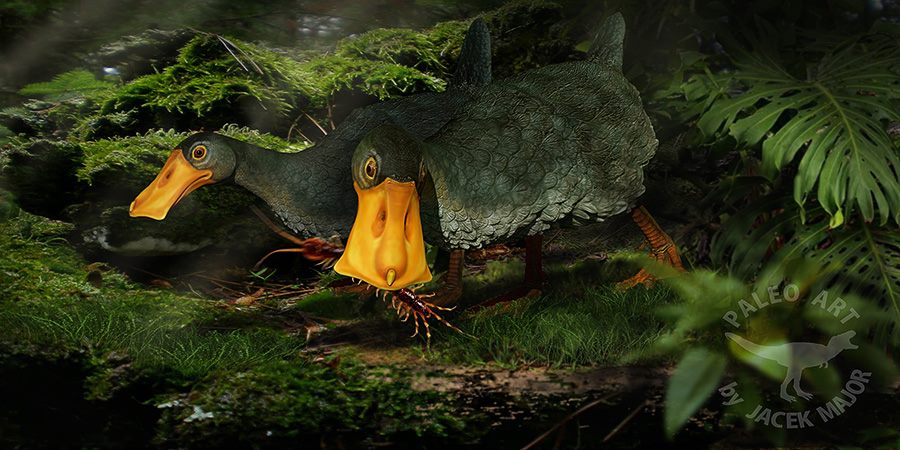
This might seem like a plausible candidate, but the bird is native to the island of Kauai, and died out a long time ago. The chance of it making a migratory trip to the Eurasian continent were nil even before it went extinct, as this was a flightless bird. Unfortunately, when islands are colonized by new species (including humans), flightless birds are often the first to be eaten.
Like other birds, the Talpanas doesn’t have furry hocks. The furry, clawed platypus still seems like a better match.
What About a Platypus?
In contrast to ducks and geese, the platypus, a furry creature that lays eggs, has a broad bill, with nostrils near the end, and when the eyes are open, you can see a distinct ring of raised skin around the eye, with light-colored fur under and sometimes around the eye The fur pulls back from the bill, like the feathers on the mallard (and not like the Luttrell drawing), but if you look closely, you’ll see a few tufts sticking out to the side (easier to see on the right side in the picture). The platypus has distinctive claws.
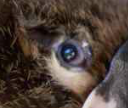
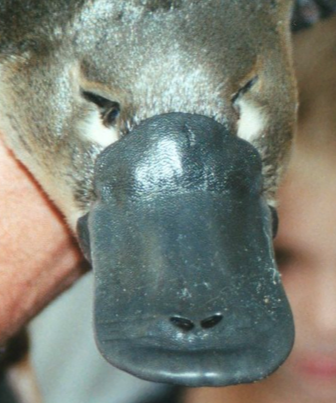
Or how about the echidna? It is cousin to the platypus and has a leathery snout (although not very wide), with nostrils near the end. When it is a baby, it sometimes has a light eye-ring or ridge. It’s not as similar as a platypus, but it does have distinctive claws. The echidna’s bill gets longer in proportion to its body as it grows, however, so it looks less like the Luttrell drawing as it matures.
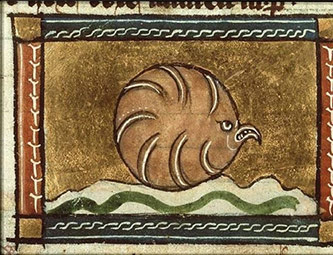
The echidna is more widely distributed than the platypus, and some species extend beyond Australia, so the odds of an echidna being seen in Europe are better than the platypus, but it still seems very unlikely that a baby echidna would be known in northern Europe before the 17th century.
If you stop here, some people might conclude that the drawing in the Luttrell Psalter is more like a platypus than echidna or bird. If they feel certain that it’s a platypus and it’s pointed out to them that the platypus wasn’t known in the west until recently, they might suggest that the Luttrell Psalter is a modern hoax (I’m not saying everyone would do this, but modern hoax theories are popular, so there are bound to be a few people who would make this suggestion).
Symbolic Interpretations
There are other possibilities. Marginal drawings sometimes illustrate fables, other times they represent theatrical characters, so the enigmatic creature might be more imaginative than real. There’s no guarantee there’s a counterpart in the real world, but since many masks were based on real animals, it remains an open question.
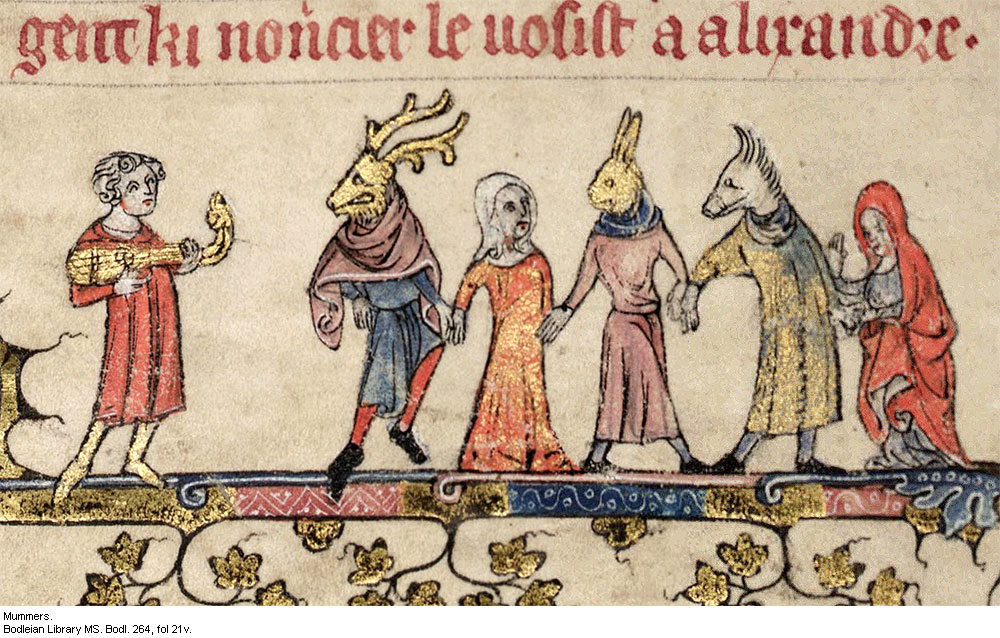
If the mystery flat-billed animal were an 18th-century drawing, people would probably assume it was a platypus and not think any further. When you find something that seems to match, It’s easier to sit back in triumph than to question or discard your own discoveries.
On the surface, the platypus seems like a good candidate for the Luttrell drawing, probably better than a duck, but a lot of confirmatory evidence would be necessary before making a determination because the ID doesn’t fit what we know (so far) about medieval history.
Research isn’t just about finding things, it’s also about confirming them. That might take more time, but the journey is worth it.
J.K. Petersen
© Copyright 2019 J.K. Petersen, All Rights Reserved
Postscript: 7 December 2019
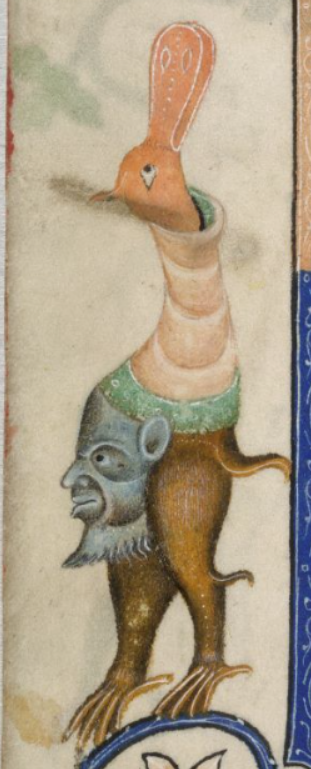
I forgot to include this illustration when I posted the above blog on December 1. Tucked away in a margin on f69v of the Luttrell Psalter, there is a small drawing of our erstwhile “platypus” looking skyward from a hybrid body.
The eye is a little more naturalistic than the larger version, and the color is different, a simple buffy-orange (that was probably closer to red when originally applied), but the shape of the bill is mostly the same as the larger drawing, very flat and spatulate, with nostrils away from the head and a ridge down the center.
